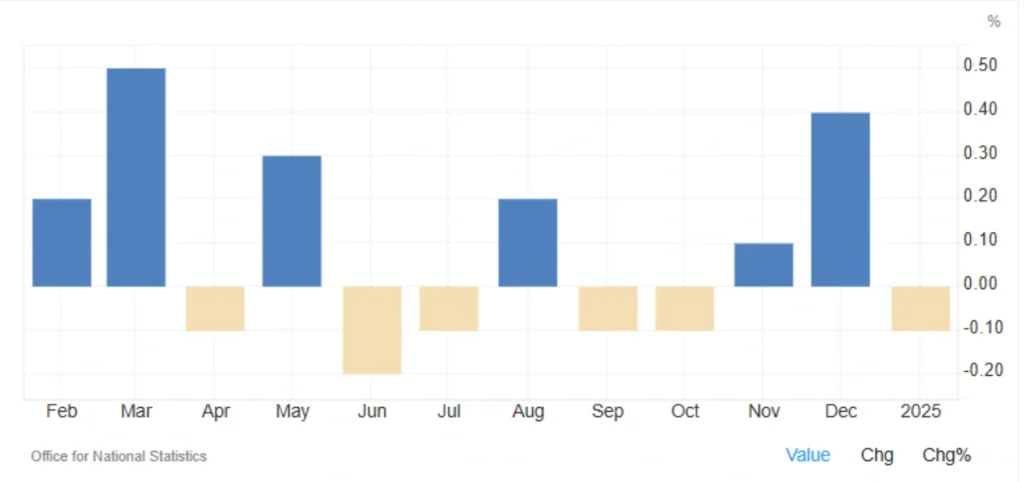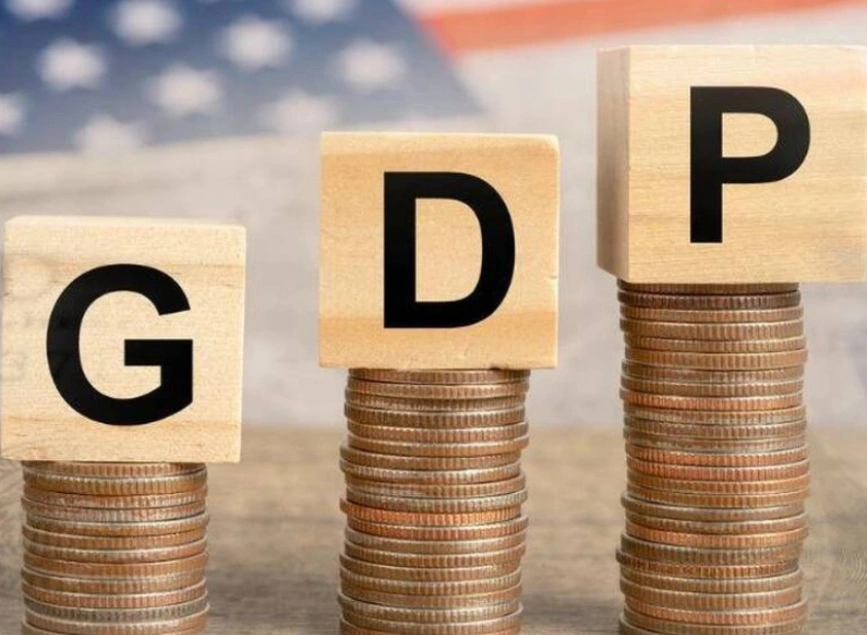
UK Economy Contraction in January 2025: A Closer Look
In January 2025, the UK economy faced an unexpected contraction, with a decline of 0.1% rather than the anticipated 0.1% growth. This shift, following a positive 0.4% increase in December, points to underlying weaknesses in key sectors such as manufacturing, mining, and construction. Let’s explore the factors contributing to this downturn and what it means for the broader economy, financial markets, and future policies.
The Key Numbers Behind the UK’s Economic Slowdown
The UK’s manufacturing sector contracted by 0.9% in January 2025, driven primarily by a 1.1% drop in industrial production. Among the hardest-hit industries were basic metals and pharmaceuticals, with reductions of 3.3% and 3.1%, respectively. These declines reflect deeper issues in production and supply chains.
On the construction front, activity fell by 0.2%, mirroring the drop observed in December 2024. The ongoing weakness in these sectors indicates broader economic challenges.
Mining and Energy Declines
The mining and extraction sector experienced a sharp 3.3% decline, primarily due to a 3.7% reduction in crude oil and natural gas production. As global energy markets remain volatile, the UK’s energy sector faces significant hurdles, contributing to the overall slowdown in economic growth.
Services Sector Shows Small Growth
Despite the broader economic contraction, the services sector posted a modest growth of 0.1%. While this is a positive sign, it wasn’t enough to offset the significant losses in other sectors. Still, the services sector remains a crucial component of the UK economy, and its growth offers some hope for the future.
Overall GDP Performance
For the three months leading up to January 2025, the UK’s GDP grew by a modest 0.2%. While this indicates some growth, it’s not enough to counteract the recent downturns seen in key areas like manufacturing and construction.
Read More: UK Consumer Confidence Sees a Modest Uptick: What It Means?
Why the UK’s Economic Performance Matters
GDP (Gross Domestic Product) is a key measure of a country’s economic health. Positive GDP growth signifies an expanding economy, while a decline can be a sign of recession. The performance of various sectors—including manufacturing, construction, and services—directly impacts overall economic growth. The current contraction suggests that the UK’s economic momentum is slowing, which could have long-term implications.
Why Did the UK Economy Shrink in January?
The contraction can be largely attributed to weaknesses in industrial production and mining, alongside reduced activity in the construction sector. Although the services sector showed some growth, it wasn’t enough to offset the losses from these other industries.
As energy production also suffered, with oil and gas production declining, the overall economic impact has been significant. These sectors have long been pillars of the UK economy, and their downturn indicates broader structural issues that need to be addressed.
What Does This Mean for Economic Policies?
With the economy underperforming, the Bank of England (BoE) may consider adjusting its monetary policies. Given the weaker-than-expected growth, there is an increased likelihood that the BoE could cut interest rates to stimulate economic activity.
Moreover, if the downturn continues, the UK government might introduce supportive fiscal policies to help boost growth and alleviate some of the pressures on households and businesses.

Analyzing the Economic Outlook
If economic growth continues to be negative in the coming months, the UK could be on the brink of a recession. The continued weakness in manufacturing and construction, alongside a slowing energy sector, will likely put further pressure on growth in the months ahead.
What’s the Impact on Financial Markets?
The weak economic data is expected to affect various financial markets:
- Currency Markets: The British pound could face downward pressure as economic weakness heightens expectations for a potential interest rate cut by the Bank of England.
- Bond Markets: Investors may flock to the bond market, seeking safe-haven assets amid economic uncertainty.
- Stock Markets: UK stock indices, particularly those related to manufacturing and construction, could experience short-term volatility as a result of the economic contraction.
Future Scenarios: What’s Next for the UK Economy?
There are two key potential scenarios for the UK’s economic future:
- Positive Scenario: If the services sector continues to grow and domestic consumption strengthens, we could see a rebound in economic growth in the coming months.
- Challenging Scenario: If weaknesses in manufacturing, construction, and energy persist, the likelihood of a deeper recession increases.
What Should Investors and Traders Do?
For Long-Term Investors
- Monitor the Bank of England’s Policies: Keep a close eye on potential changes to interest rates and their impact on the pound.
- Focus on Resilient Sectors: Consider looking at sectors that are less sensitive to economic cycles, such as financial services and wholesale trade.
- Diversify Your Portfolio: To manage risk, especially in the face of a potential recession, diversifying investments is crucial.
For Short-Term Traders
- Track the Pound’s Movements: Given the economic pressures, the British pound is likely to experience fluctuations. Monitoring forex markets can help inform trading strategies.
- Use Stop-Loss Orders: Managing risk in UK stock indices, especially those tied to manufacturing and construction, is essential.
- Watch Key Economic Indicators: Upcoming data on interest rates and production levels will be crucial for anticipating market movements.
For Commodity and Energy Market Participants
- Assess the Impact on Raw Material Demand: Monitor how the reduction in UK production might affect demand for raw materials and global prices.
- Track Oil and Gas Prices: Fluctuations in oil and gas production will likely impact global energy prices, which can affect trading strategies.
Conclusion
The UK economy’s unexpected contraction in January 2025 highlights significant challenges, particularly in key sectors like manufacturing, mining, and construction. While the services sector showed some growth, it wasn’t enough to offset the broader downturn. Going forward, investors should closely monitor economic trends, especially in relation to the Bank of England’s policies, the pound, and key sectors. By staying informed and adapting strategies, both investors and traders can navigate the potential challenges ahead.
Share
Hot topics

Federal Reserve’s Challenges to Trump’s New Policies
As the Federal Reserve Open Market Committee (FOMC) prepares for its upcoming meeting, all eyes are on how the Fed will respond to Donald Trump’s latest economic policies. With the...
Read more




Submit comment
Your email address will not be published. Required fields are marked *